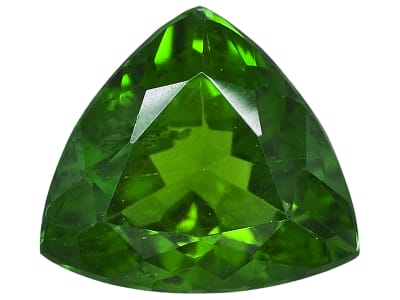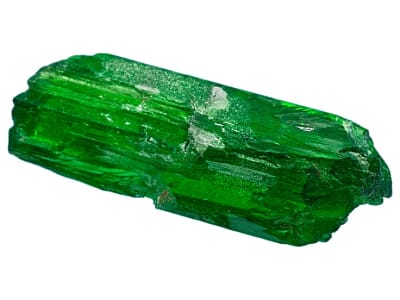Deriving its name from a locality in the Swiss Alps, tremolite is a member of the amphibole group, a complex series of silicate minerals. It forms in thin, parallel fibers, sometimes producing a distinct cat's eye effect when cut in cabochons. Tremolite comes in a variety of colors ranging from white, brown, colorless, gray, light green, light yellow and pink-violet. This gem sometimes occurs as fine, needle-like inclusions in emerald and quartz.
General Information
Common Name
Tremolite
Species
Tremolite
Transparency
Transparent - Translucent
Dispersion
Strength: Weak Fire
Refractive Index
1.560-1.643
Birefringence
0.017-0.027
Optic Character
Biaxial
Optic Sign
Negative
Polariscope Reaction
Aggregate (AGG), Doubly Refractive (DR)
Fluorescence
SWUV: Inert to moderate orange to yellow
LWUV: Inert to moderate orange or pink
LWUV: Inert to moderate orange or pink
Pleochroism
Unobservable
Hardness
5-6
Streak
White
Specific Gravity
2.950-3.070
Toughness
Poor
Luster
Vitreous, Silky
Fracture
Uneven
Cleavage
Perfect, in one direction
Chemical Name
calcium magnesium iron silicate
Chemical Formula
Ca2Mg5Si8O22(OH)2
Crystal System
Monoclinic
Chemistry Classification
Silicate
Tremolite Colors
-
 Blue
Blue -
 Brown
Brown -
 Colorless
Colorless -
 Gray
Gray -
 Green
Green -
 Pink
Pink -
 White
White -
 Yellow
Yellow
Alternate Names
Chrome-Tremolite, Hexagonite, Grammatite
Countries of Origin
Tanzania, United Republic Of; Afghanistan; United States of America; Switzerland; Canada; Austria; Unknown; Norway; China; Italy; Australia; France; Germany

